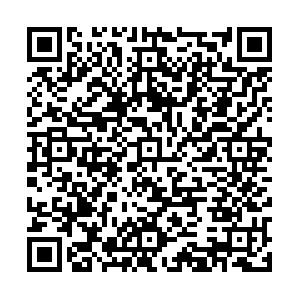Analysis of the impact of COVID-19 epidemic on weight gain in Chinese adult and its related factors
-
摘要:
目的 分析COVID-19疫情对中国成年人群体重增加的影响。 方法 利用中国人民大学中国调查与数据中心开展的新冠肺炎疫情综合影响调查,通过随机数字拨号,于全国各个地级市抽取18岁及以上的成年居民样本,并用电话调查系统进行问卷调查,本研究纳入数据分析的样本共2 051例。采用χ2检验比较不同特征样本人群受疫情影响的体重增加差异,并建立多因素Logistic回归分析模型分析体重增加的影响因素。 结果 研究对象疫情期间体重增加的比例较高(29.30%),多因素分析结果显示,女性、青年人群、城市居民、湖北省居民、所住社区有确诊病例、未被集中隔离或收治、受教育程度较高和家庭收入较低的人群体重增加可能性更大(均有P<0.05)。 结论 COVID-19疫情使成年人群体重在短期内增加,可能会对部分人群造成长期健康效应,对于疫情期间体重增加高风险人群需要加以重视,疫情防控措施与指导也需对这一方面的健康风险加强关注。 Abstract:Objective To analyze the impact of COVID-19 epidemic on body weight gain for adults in China. Methods Based on the General Impacts Survey of COVID-19 conducted by National Survey Research Center at Renmin University of China, which use random digital dialing method to sample respondents over 18 years old from all prefectural level areas in China, this study included 2 051 adult samples. The Pearson Chi-square test was used to examine the differences in the weight gain of different demographic groups, and multiple Logistic regression models were used to analyze the factors of the weight gain. Results A total of 29.30% adults reported weight gain. And multivariate Logistic analysis showed that women, young people, urban dwellers, residents in Hubei Province, living in communities which had confirmed cases, never had been quarantined or treated at assembly sites, high-educated, and low-income population had higher chance to gain weight (all P < 0.05). Conclusion The short-term increase of body weight affected by the epidemic may lead to long-term health effects for some people. Adults who have high risk of weight gain during the epidemic need to be paid more attention to, and epidemic prevention measures and proposed guidance also need to realize the health risk in this period. -
Key words:
- COVID-19 /
- Weight gain /
- Health
-
表 1 不同特征人群受疫情影响体重增加情况比较[n(%)]
Table 1. Weight gain affected by COVID-19 pandemic among different population [n(%)]
变量 总例数 体重增加例数 原始χ2值 加权后χ2值 P值 性别 22.245 699 643.170 < 0.001 男 1 360(66.31) 376(27.65) 女 691(33.69) 225(32.56) 年龄(岁) 27.269 22 340 690.000 < 0.001 18~<45 1 464(71.38) 456(31.15) 45~<60 426(20.77) 113(26.53) ≥60 161(7.85) 32(19.88) 城乡 17.257 13 013 623.000 < 0.001 城市 1 465(71.43) 451(25.60) 农村 586(28.57) 150(30.78) 居住地区 4.162 1 143 946.700 < 0.001 湖北省 791(38.57) 241(30.47) 非湖北省 1 260(61.43) 360(28.57) 所住社区或村庄是否曾有确诊病例 6.749 243 785.160 < 0.001 是 392(19.11) 135(28.09) 否 1 659(80.89) 466(34.44) 本人是否曾被集中隔离或收治 3.521 1 035 229.100 < 0.001 是 30(1.46) 593(29.34) 否 2 021(98.54) 8(26.67) 教育程度 4.794 8 716 141.000 < 0.001 初中及以下 460(22.43) 115(25.00) 高中/中专/技校 420(20.48) 115(27.38) 大学专科 436(21.26) 145(33.25) 大学本科及以上 735(35.84) 226(30.75) 家庭人均收入(万元) 12.022 1 953 592.800 < 0.001 <1 555(27.06) 149(26.85) 1~<5 749(36.52) 215(28.70) 5~<10 462(22.53) 155(33.55) ≥10 285(13.90) 82(28.77) 表 2 疫情期间体重增加人群的BMI分布情况
Table 2. BMI distribution of those who gained weight during COVID-19 pandemic
体重增加人的BMI状况 例数 百分比(%) 低体重 24 3.99 正常 321 53.41 超重 190 31.61 肥胖 66 10.98 表 3 样本人群受COVID-19疫情影响体重增加的多因素Logistic分析
Table 3. Multivariate Logisitic analysis on weight gain affected by COVID-19 pandemic of the sample population
变量 疫情期间体重增加 OR(95% CI)值 P值 性别 男 0.894(0.893~0.894) < 0.001 女 1.000 年龄(岁) 18~<45 1.000 45~<60 0.899(0.899~0.900) < 0.001 ≥60 0.268(0.267~0.268) < 0.001 城乡 城市 1.865(1.864~1.865) < 0.001 农村 1.000 居住地区 湖北省 1.508(1.506~1.509) < 0.001 非湖北省 1.000 所住社区或村庄是否曾有确诊病例 是 1.037(1.036~1.037) < 0.001 否 1.000 本人是否曾被集中隔离或收治 是 0.176(0.176~0.177) < 0.001 否 1.000 教育程度 初中及以下 1.000 高中/中专/技校 1.138(1.136~1.138) < 0.001 大学专科 1.337(1.336~1.338) < 0.001 大学本科及以上 1.089(1.088~1.089) < 0.001 家庭人均收入(万元) <1 1.000 1~<5 0.930(0.929~0.931) < 0.001 5~<10 0.931(0.930~0.932) < 0.001 ≥10 0.710(0.709~0.711) < 0.001 -
[1] Yan AF, Sun X, Zheng J, et al. Perceived risk, behavior changes and health-related outcomes during COVID-19 pandemic: findings among adults with and without diabetes in China[J]. Diabetes Res Clin Pract, 2020, 167: 108350. DOI: 10.1016/j.diabres.2020.108350. [2] Nielsen Global. COVID-19: tracking the impact[EB/OL]. (2020-05-10)[2021-02-17]. https://www.nielsen.com/us/en/. [3] Schoeller DA. The effect of holiday weight gain on body weight[J]. Physiol Behav, 2014, 134: 66-69. DOI: 10.1016/j.physbeh.2014.03.018. [4] Abarca-Gómez L, Abdeen ZA, Hamid ZA, et al. Worldwide trends in body-mass index, underweight, overweight, and obesity from 1975 to 2016: a pooled analysis of 2416 population-based measurement studies in 128· 9 million children, adolescents, and adults[J]. Lancet, 2017, 390(10113): 2627-2642. DOI: 10.1016/S0140-6736(17)32129-3. [5] Zachary Z, Brianna F, Brianna L, et al. Self-quarantine and weight gain related risk factors during the COVID-19 pandemic[J]. Obes Res Clin Pract, 2020, 14(3): 210-216. DOI: 10.1016/j.orcp.2020.05.004. [6] AlMughamis N, AlAsfour S, Mehmood S. Poor eating habits and predictors of weight gain during the COVID-19 quarantine measures in Kuwait: a cross sectional study[J]. F1000Research, 2020, 9(914): 914. DOI: 10.12688/f1000research.25303.1. [7] Rundle AG, Park Y, Herbstman JB, et al. COVID-19-related school closings and risk of weight gain among children[J]. Obesity (Silver Spring), 2020, 28(6): 1008-1009. DOI: 10.1002/oby.22813. [8] Pietrobelli A, Pecoraro L, Ferruzzi A, et al. Effects of COVID-19 lockdown on lifestyle behaviors in children with obesity living in Verona, Italy: a longitudinal study[J]. Obesity, 2020, 28(8): 1382-1385. DOI: 10.1002/oby.22861. [9] 中商产业研究院. 2019年中国手机产销数据分析及2020年行业发展趋势预测[EB/OL]. (2020-01-09)[2021-02-10]. https://www.askci.com/news/chanye/20200109/1704371156221.shtml.China Business Industry Research Institute. 2019 China mobile phone production and sales data analysis and 2020 industry development trend forecast[EB/OL]. (2020-01-09)[2021-02-10]. https://www.askci.com/news/chanye/20200109/1704371156221.shtml. [10] 贺媛, 赵小兰, 曾强. 城市成人超重、肥胖、中心性肥胖的流行特征和相关危险因素分析[J]. 实用预防医学, 2015, 22(4): 390-394. DOI: 10.3969/j.issn.1006-3110.2015.04.002.He Y, Zhao XL, Zeng Q. The epidemiological characteristics and risk factors of overweight, obesity and central obesity among Chinese urban adults[J]. Pract Prev Med, 2015, 22(4): 390-394. DOI: 10.3969/j.issn.1006-3110.2015.04.002. [11] 赵文华, 翟屹, 胡建平, 等. 中国超重和肥胖造成相关慢性疾病的经济负担研究[J]. 中华流行病学杂志, 2006, 27(7): 555-559. https://www.cnki.com.cn/Article/CJFDTOTAL-ZHLX200607004.htmZhao WH, Zhai Y, Hu JP, et al. Economic burden of obesity related chronic diseases in China[J]. Chin J Epidemiol, 2006, 27(7): 555-559. https://www.cnki.com.cn/Article/CJFDTOTAL-ZHLX200607004.htm [12] 崔赛赛, 孙博, 韩悦容, 等. 不同年龄、性别体检人群人体组成成分对比分析[J]. 临床军医杂志, 2017, 45(7): 676-680. DOI: 10.16680/j.1671-3826.2017.07.06.Cui SS, Sun B, Han YR, et al. Comparative analysis of human body composition among individuals of different age and gender[J]. Clin J Med Off, 2017, 45(7): 676-680. DOI: 10.16680/j.1671-3826.2017.07.06. [13] Kriaucioniene V, Bagdonaviciene L, Rodríguez-Pérez C, et al. Associations between changes in health behaviours and body weight during the COVID-19 quarantine in Lithuania: the Lithuanian COVIDiet study[J]. Nutrients, 2020, 12(10): 3119. DOI: 10.3390/nu12103119. -




 下载:
下载: 